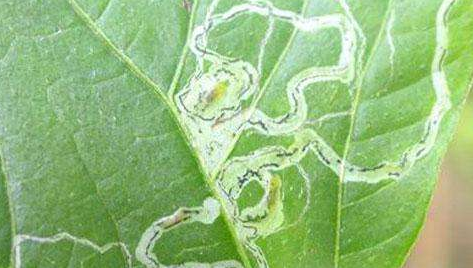Liriomyza, also known as the ghost, is a pest of the Diptera. It was introduced to Brazil from Brazil in 1993 and is currently happening throughout the country. Mainly harmful to cucumber, tomato, eggplant, pepper, cowpea, broad bean, soybean, kidney bean, watermelon, melon, loofah and other 22 families more than 110 plants. First, the damage characteristics After hatching, the larvae ate the mesophyll and showed a tortuous mark. The plant is seriously damaged during the young period, and the insects are densely covered on the leaves when the insects are in a long time. The leaves are yellow, coke or shedding in a short period of time. Adults lay eggs and feed on the epidermis of the leaves, forming coarser spawning points and feeding points, resulting in loss of leaf water and affecting the normal photosynthesis of plants. Second, the morphological characteristics The adult larvae are 2 mm in length, gray in the chest and abdomen, and the amount is bright yellow; the egg is oval, beige; the larva is scorpion-like, colorless when hatching, the gradient is yellow-orange, and the mature larvae are about 3 mm long. Third, life habits The larvae usually occur in the southern provinces for 21 to 24 generations. There is no wintering phenomenon. Adults use the ovipositor to stab the leaves and suck the juice. The females lay the eggs under the skin of some wounds, and the eggs hatch for 2 to 5 days. The larval stage is 4 to 7 days. The larvae of the last instar larvae bite the leaf epidermis and pupate the leaves outside the leaves or the soil surface. The pupa emerges into adults at 7 to 14 days, 2 to 4 weeks in each summer and 6 to 8 weeks in winter. Fourth, prevention and treatment methods Due to the small size of the larvae, the ability to reproduce is strong, the adult has a strong ability to fly, and the chemical control is highly resistant. At the same time, the field generations overlap, and the granules can fall on the soil surface. Therefore, in order to effectively control the damage of the larvae, it is necessary to adopt a variety of methods for comprehensive prevention and treatment. 1. After the harvest is completed, clean the diseased bodies in the field in time, and carry out rotations with non-loving vegetables. In the summer, the soil is deeply swelled in the high temperature. 2. Strengthen the investigation in the light-haired area of ​​Liriomyza sativae, and found that the damaged leaves were removed in time, and yellow yellow wormwood was suspended to trap adult worms. 3, the drug control should pay attention to the alternate use of different agents to prevent pests from developing resistance. The control of adult spray should be carried out in the morning or evening. 220 g / liter of chlorinated cyanuric acid chlorpyrifos, 10% cyanamide amide dispersible oil suspension, 4.5% beta-cypermethrin emulsifiable concentrate, 20% insecticidal soluble powder, 1.8% avermectin water emulsion spray for prevention and treatment. Lose Weight Plant Extract,Poria Extract,Seaweed Extract,Codonopsis Pilosula Extract Fufeng Sinuote Biotechnology Co.,Ltd. , https://www.sntbiology.com